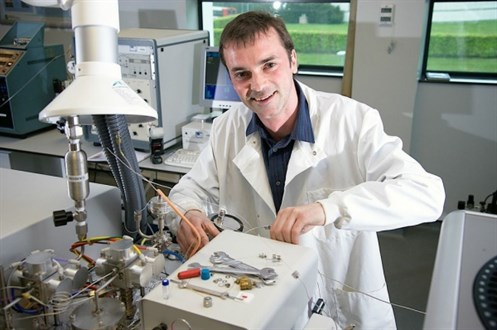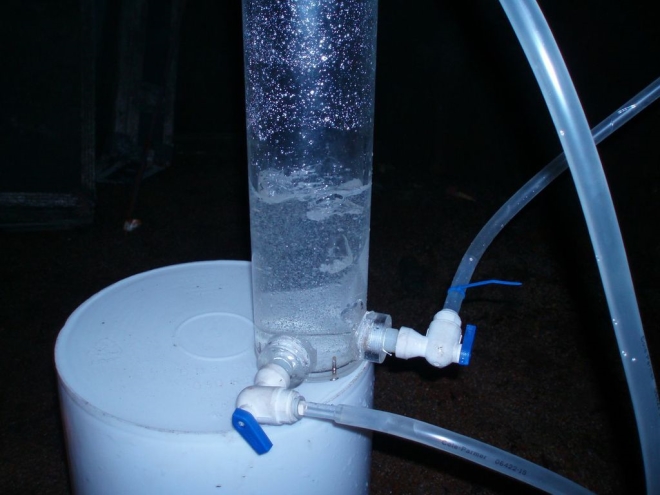16 May 2013
A UK-Canadian team of scientists has discovered ancient pockets of water, which have been isolated deep underground for billions of years and contain abundant chemicals known to support life.
This water could be some of the oldest on the planet and may even contain life. Not just that, but the similarity between the rocks that trapped it and those on Mars raises the hope that comparable life-sustaining water could lie buried beneath the red planet’s surface.
The findings, published in Nature today, may force us to rethink which parts of our planet are fit for life, and could reveal clues about how microbes evolve in isolation.
Researchers from the universities of Manchester, Lancaster, Toronto and McMaster analysed water pouring out of boreholes from a mine 2.4 kilometres beneath Ontario, Canada.
They found that the water is rich in dissolved gases like hydrogen, methane and different forms – called isotopes – of noble gases such as helium, neon, argon and xenon. Indeed, there is as much hydrogen in the water as around hydrothermal vents in the deep ocean, many of which teem with microscopic life.
The hydrogen and methane come from the interaction between the rock and water, as well as natural radioactive elements in the rock reacting with the water. These gases could provide energy for microbes that may not have been exposed to the sun for billions of years.
The crystalline rocks surrounding the water are thought to be around 2.7 billion years old. But no-one thought the water could be the same age, until now.
Using ground-breaking techniques developed at the University of Manchester, the researchers show that the fluid is at least 1.5 billion years old, but could be significantly older.

NERC-funded Professor Chris Ballentine of The University of Manchester, co-author of the study, and project director, said: "We’ve found an interconnected fluid system in the deep Canadian crystalline basement that is billions of years old, and capable of supporting life. Our finding is of huge interest to researchers who want to understand how microbes evolve in isolation, and is central to the whole question of the origin of life, the sustainability of life, and life in extreme environments and on other planets."
Before this finding, the only water of this age was found trapped in tiny bubbles in rock and is incapable of supporting life. But the water found in the Canadian mine pours from the rock at a rate of nearly two litres per minute. It has similar characteristics to far younger water flowing from a mine 2.8 kilometres below ground in South Africa that was previously found to support microbes.
Professor Ballentine and his colleagues don’t yet know if the underground system in Canada sustains life, but Dr Greg Holland of Lancaster University, lead author of the study, said: "Our Canadian colleagues are trying to find out if the water contains life right now. What we can be sure of is that we have identified a way in which planets can create and preserve an environment friendly to microbial life for billions of years. This is regardless of how inhospitable the surface might be, opening up the possibility of similar environments in the subsurface of Mars."
Professor Ballentine, based in Manchester’s School of Earth, Atmospheric and Environmental Sciences, added: "While the questions about life on Mars raised by our work are incredibly exciting, the ground-breaking techniques we have developed at Manchester to date ancient waters also provide a way to calculate how fast methane gas is produced in ancient rock systems globally. The same new techniques can be applied to characterise old, deep groundwater that may be a safe place to inject carbon dioxide."
David Willetts, Minister for Universities and Science, sais: "This is excellent pioneering research. It gives new insight into our planet. It has also developed new technology for carbon capture and storage projects. These have the potential for growth, job creation and our environment."
This work was funded by NSERC Discovery and CRC grants, a NERC grant and Deep Carbon Observatory (DCO) support.
Video shows ancient gas and water that flows from exploration boreholes in the Timmins mine 2.4km underground being collected for analysis at Manchester and Toronto univerities. Credit: L. Li (2012)















